Learn a new Ukulele chord every day of the year. The chord for January 9th is Cadd2. Cadd2 is a great contemporary chord in wide use in a variety of styles.
Learn a new Ukulele chord every day of the year. The chord for January 9th is Cadd2.
Cadd2 is a great contemporary chord in wide use in a variety of styles.
Cadd2 is a great contemporary chord in wide use in a variety of styles.
An added tone chord, or added note chord, is a non-tertian (not built in thirds) chord composed of a tertian triad (built in thirds) and an extra added
note. The added note is not a seventh (three thirds from the chord root), but typically a second or ninth note, which cannot be defined by a sequence of thirds from the root.
For any Add chord, the added note, if diatonic to the current scale/tonality does not change the harmonic function of the chord.
traditionallymajor, minor, diminished, or augmented. With contemporary triads including sus and add chords.
Todays' open position Cadd2 is a Contemporary Triad , is can be based on major triad with the root on string three. Raise the root two frets and you get an add2.

4-part, a.k.a.
JazzChords
Jazzchords for creating your 4-part, contemporary chord foundation and
Life Beyond the Third Fret.
Movable Ukulele Chords Lesson Series page.

 Understanding a Chord Diagram
Understanding a Chord Diagram
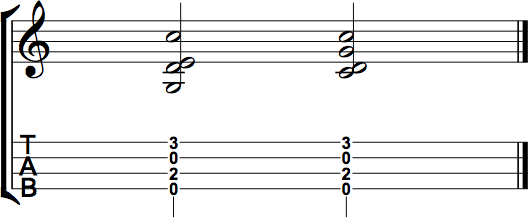
Gvariations
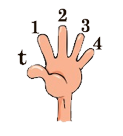 Although additional fingerings are possible for many chords, fingering for any given chord depends on the science of how our fingers work and on the harmonic context the chord is being used in—what was the previous chord, and what's the next chord? The goal is to play all the notes right behind the frets when possible. Remember, longer fingers can reach the lower strings better, and finger two can stack on finger three, and finger three can stack on finger four.
Although additional fingerings are possible for many chords, fingering for any given chord depends on the science of how our fingers work and on the harmonic context the chord is being used in—what was the previous chord, and what's the next chord? The goal is to play all the notes right behind the frets when possible. Remember, longer fingers can reach the lower strings better, and finger two can stack on finger three, and finger three can stack on finger four.- 0 1 0 2
- 0 1 0 3
- 0 1 0 4
- 0 2 0 4
- 0 3 0 4

Cadd2 – the m is pronounced “minor”. Minor chords are the second most common chord type next to major chords.
Minor chords have a dark sound.
}}
Related Lessons, Videos, Lesson Series, Songs, Books & Reference Charts, Resources & Assets, Workshops are below.
Learn a new Ukulele chord every day of the year. The chord for January 6th is Cadd2.
This chord is derived from the January 1st chord, C. For further exploration of this chord and its movable form visit the Movable Ukulele Chords series of lessons: https://learningukulele.com/lessons/code/UL200.
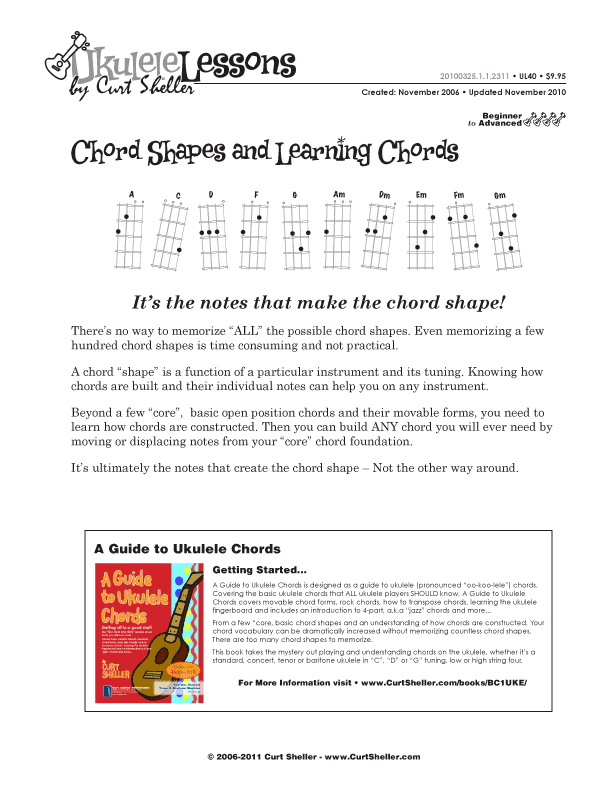
Pick up any chord dictionary, and one thought that should go through your mind is - TOO MANY CHORDS There is now way to memorize all those shapes. It would be better off learning how they came up with all those shapes. Most chord dictionaries are also just like pages transposed to all possible keys.
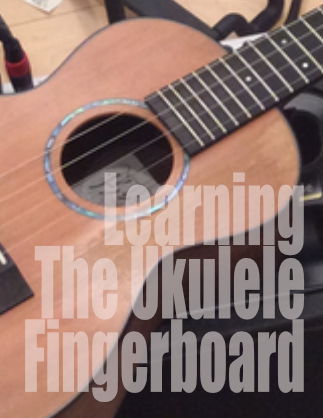
Most players struggle with learning the names of the notes of the ukulele fingerboard. There doesn't seem to a pattern and notes repeat. There is an easy way and "it's easier that you think." Most players know the names of the open strings for their favorite tuning.
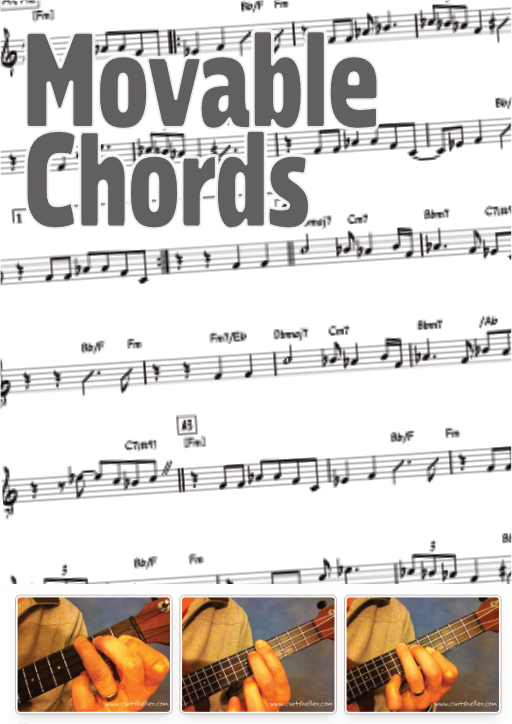
A series of weekly ukulele lessons originally presented throughout 2007 on movable ukulele chords as the "Ukulele Chord of The Week Series". Based on the Ukulele Chords book by Curt Sheller (me). It takes the open position chords and shows the movable form and the variations.
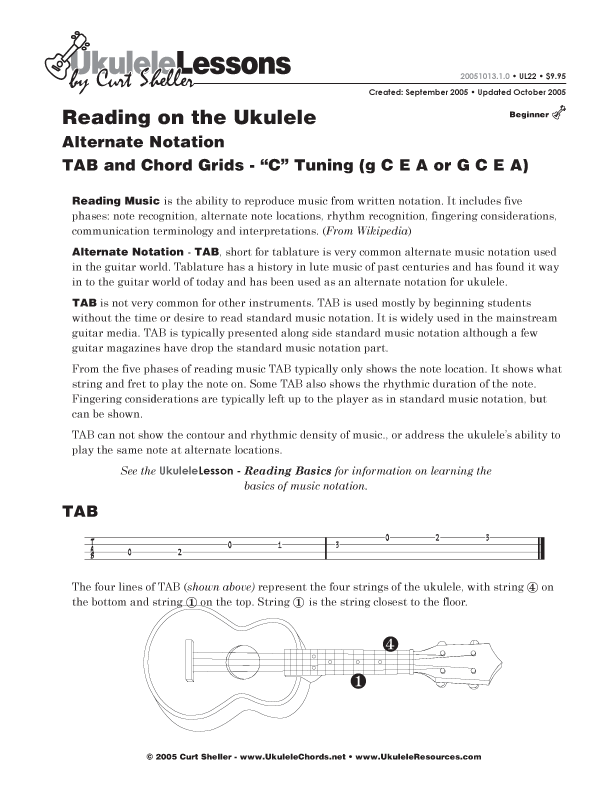
"TAB" or "Tablature", is an alternate form of musical notation, which tells players where to place their fingers on a particular instrument rather than which pitches to play. TAB is sort of a secret language between guitar players and ukulele players. Although a shortcut to getting started it actually serves to alienate one from the rest of the music world.
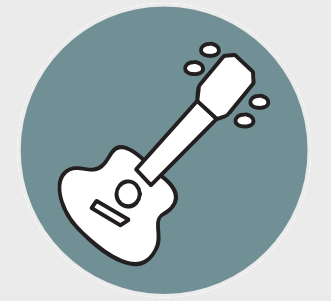
For music and learning an instrument like the ukulele or guitar, it's all about the making the connection between your Mind, your Hands, and your Ear. When listening to music, we enjoy it at the tempo the composer or artist intended, in real time. Only the ear is involved in listening. This is passive listening and you're simply enjoying the music. This is what we do every day and it's what draws us to want to learn a musical instrument.
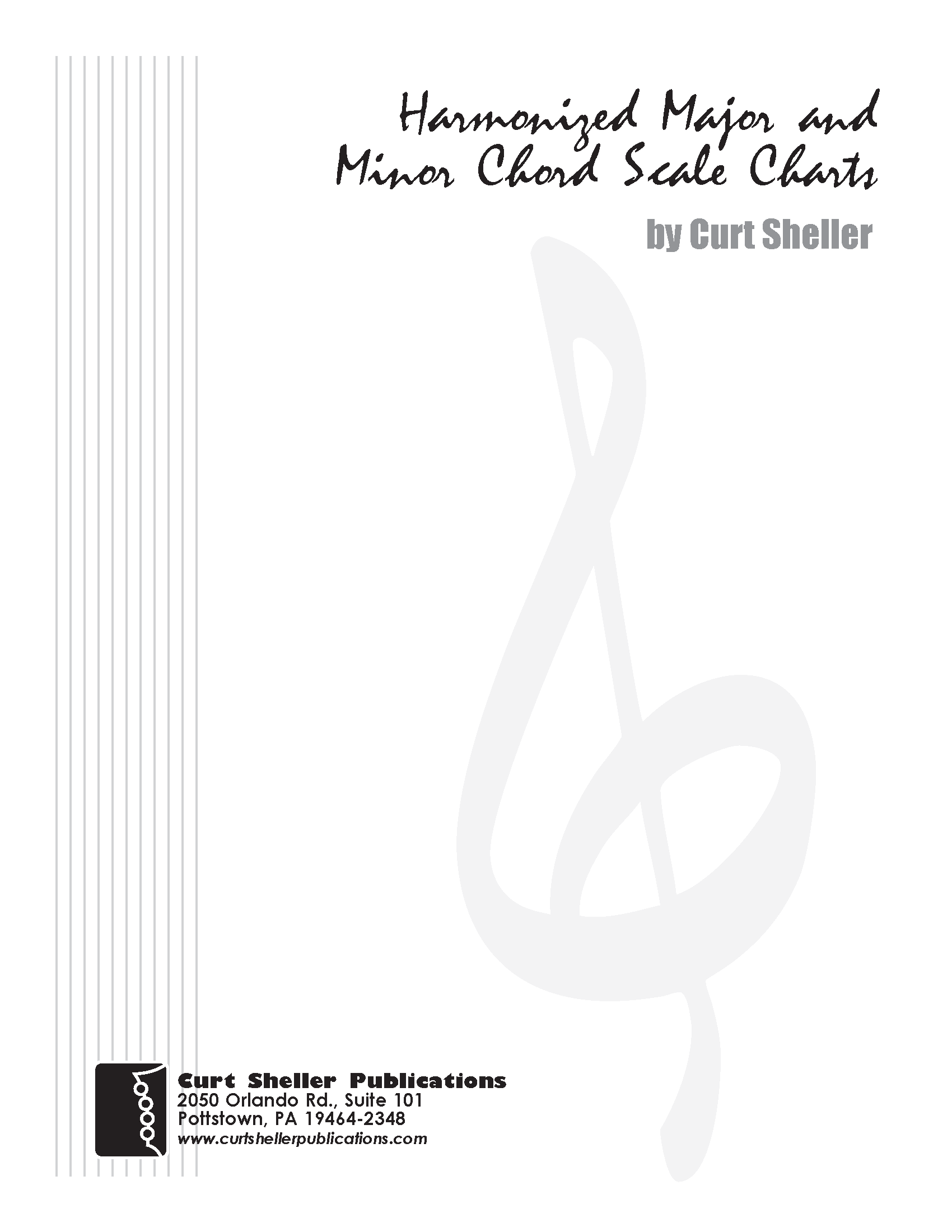
The "Major Scale" or Ionian scale is a diatonic scale, made up of seven distinct notes, plus an eighth which duplicates the first one octave higher. In solfege these notes correspond to the syllables Do, Re, Mi, Fa, Sol, La, Ti/Si, (Do), the Do in the parenthesis at the end being the octave of the root.
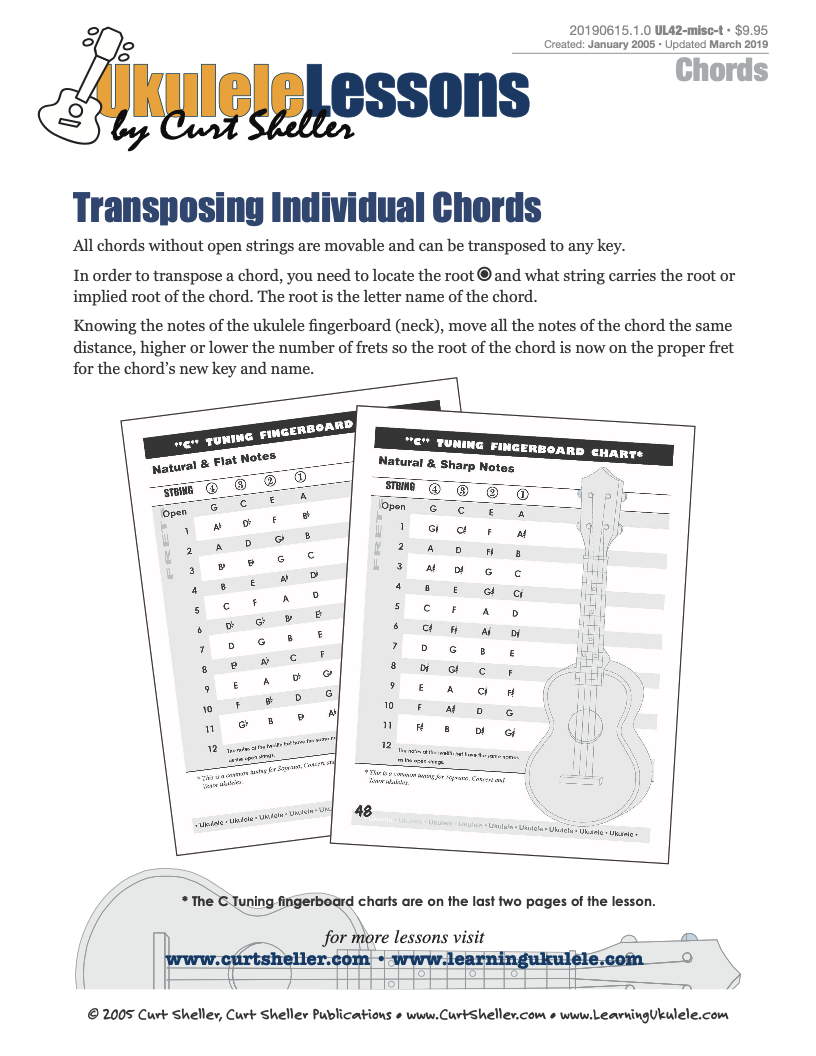
"Transposition" is the process of moving a note, chord, scale or any musical passage from one key to another key. All music can be transposed, from a single note to a complex musical score. This lesson deals with transposing chords on ukulele and transposing chords.

These ukulele lessons are essential for both beginners who are just starting out and seasoned players who have already gained some experience. Even if you consider yourself a seasoned player, exploring this series of lessons can still be highly beneficial. You are likely to discover new insights and perhaps even be reminded of valuable information that can greatly assist you when teaching beginners or further enhancing your own skills.

Covering basic ukulele chords that ALL uke players MUST know, movable chord forms, rock uke chords, how to transpose chords, learning the ukulele fingerboard and an introduction to 4-part jazz chords and more... FOR LEFTIES - Tunings: C, G, or D Tunings. Low or high string four variations.
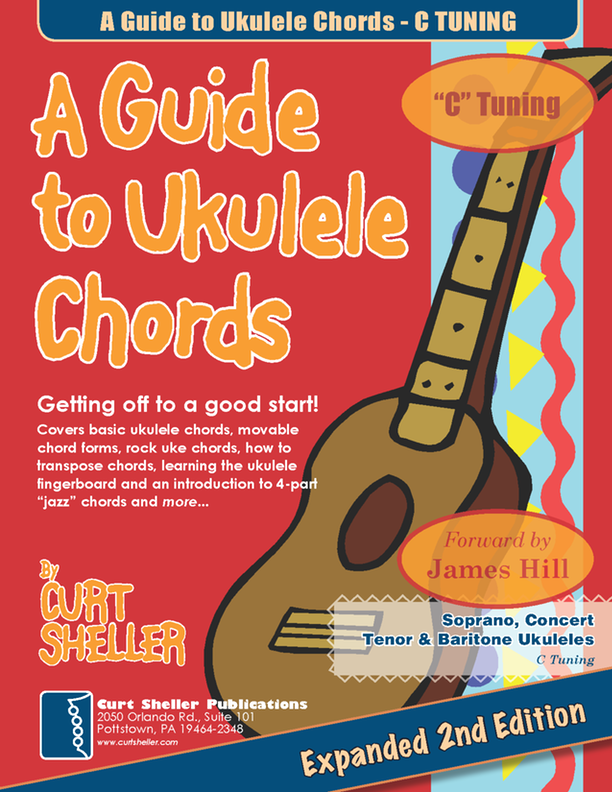
A Guide to Ukulele Chords, Second Edition is designed as a guide to ukulele chords. Covering the basic ukulele chords that ALL ukulele players SHOULD know. A Guide to Ukulele Chords covers movable chord forms, rock chords, how to transpose chords, learning the ukulele fingerboard and includes an introduction to 4-part, a.k.a jazz chords and more...

Finally, learn the names of the notes of the ukulele fingerboard in C tuning .

Learn the six fingering principles to navigating the ukulele fingerboard. Fingering is one of the most universal topics. Book: Six Secrets of the Ukulele Fingering
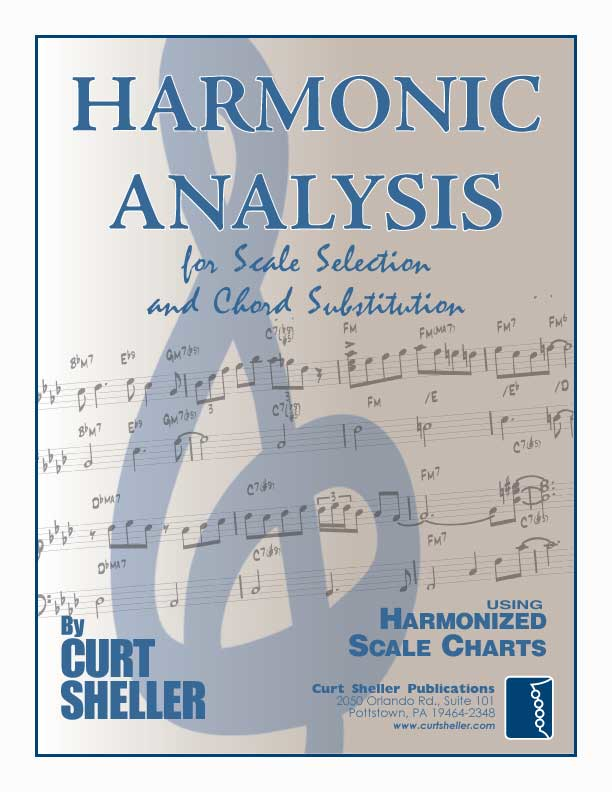
Harmonic Analysis is the understanding of the functional sequence of chords. It is the process used to analyze the harmonic structure of a progression, song or composition. Book: Harmonic Analysis for Scale Selection and Chord Substitution
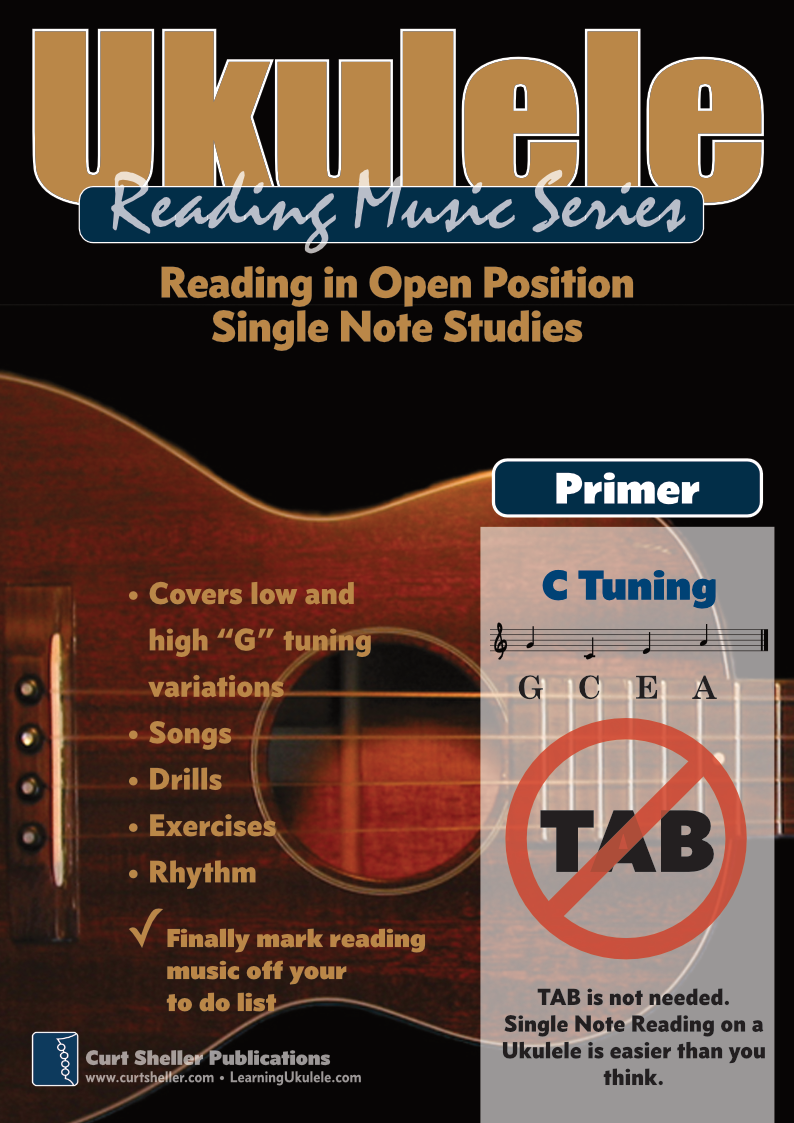
Learn to read single note melodies in the first/open position is a lot easier than you might think. Book: Ukulele – Reading Music Series – Primer
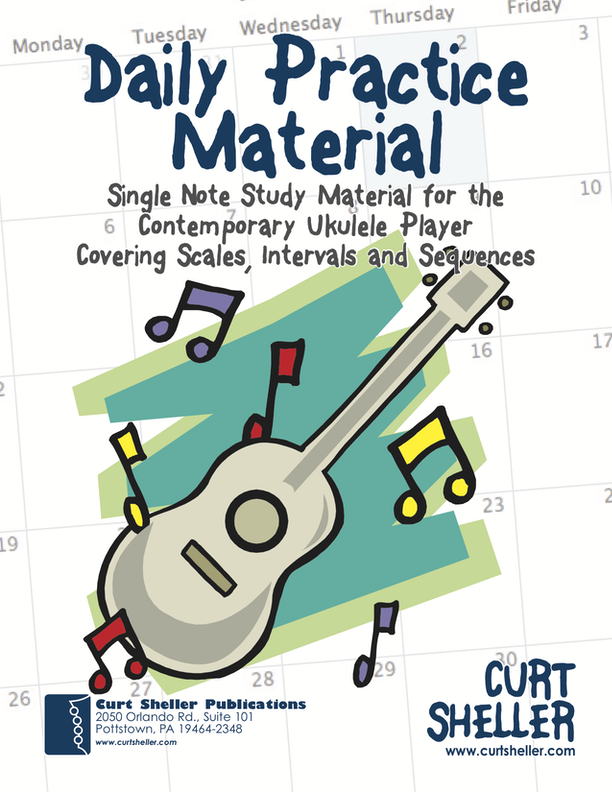
An organized collection of daily practice and reference material for the contemporary ukulele player for developing the vocabulary and knowledge necessary for single note playing. Book: Daily Practice Material for the Contemporary Ukulele
Checkout the Books & Reference Charts for additional Handy, Dandy Reference Charts.
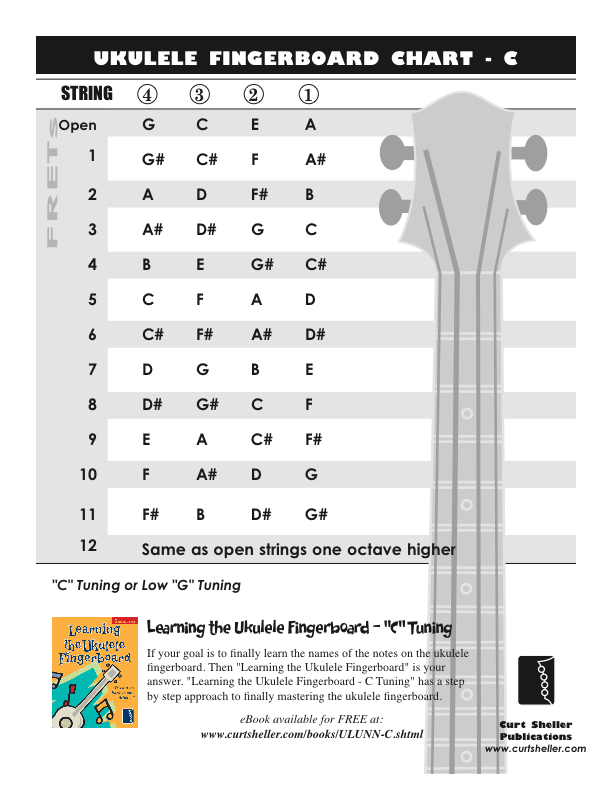
Ukulele Fingerboard Chart for C Tuning, Low or High G – G C E A
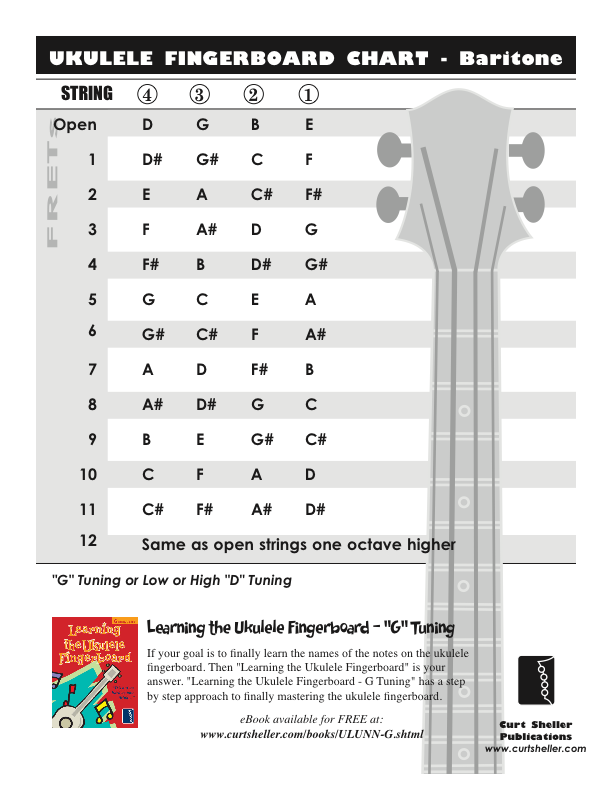
Ukulele Fingerboard Chart for G Tuning, Low or High A – D G B E
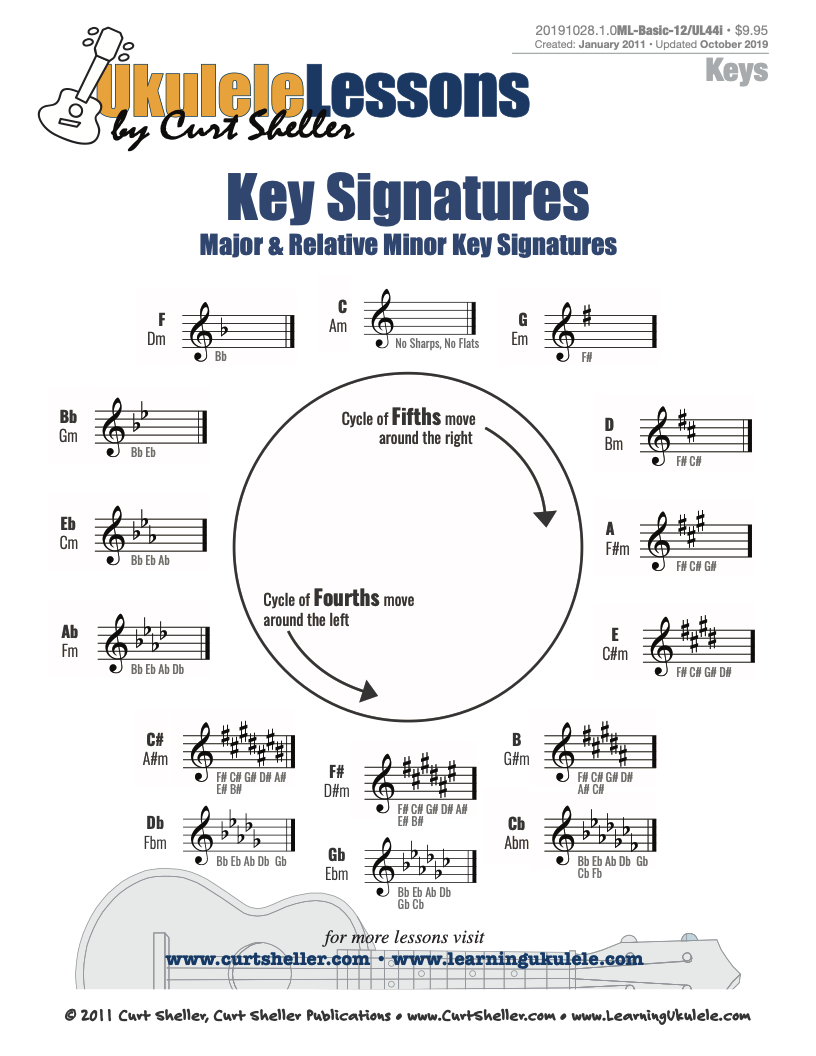
A handy reference chart of all 15 major and relative minor key signatures. US Letter 8.5 x 11 sized (ANSI-A), A4
Checkout the Books & Reference Charts for additional Handy, Dandy Reference Charts.

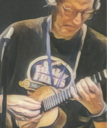
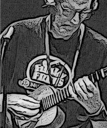

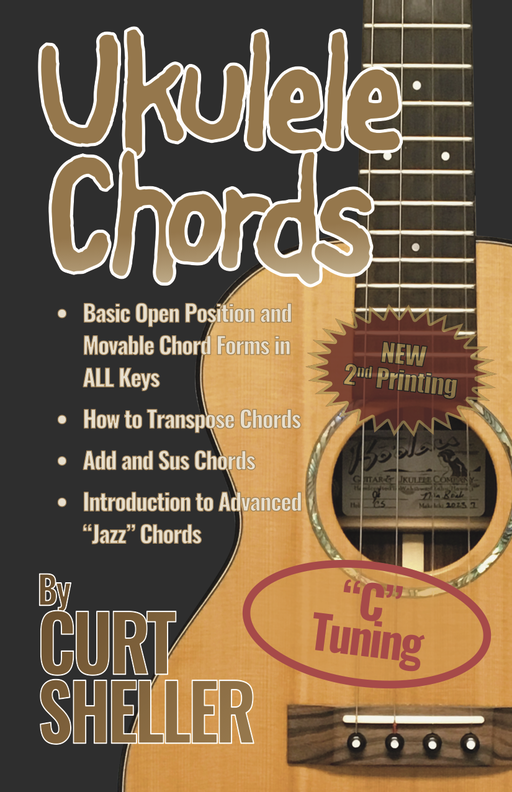
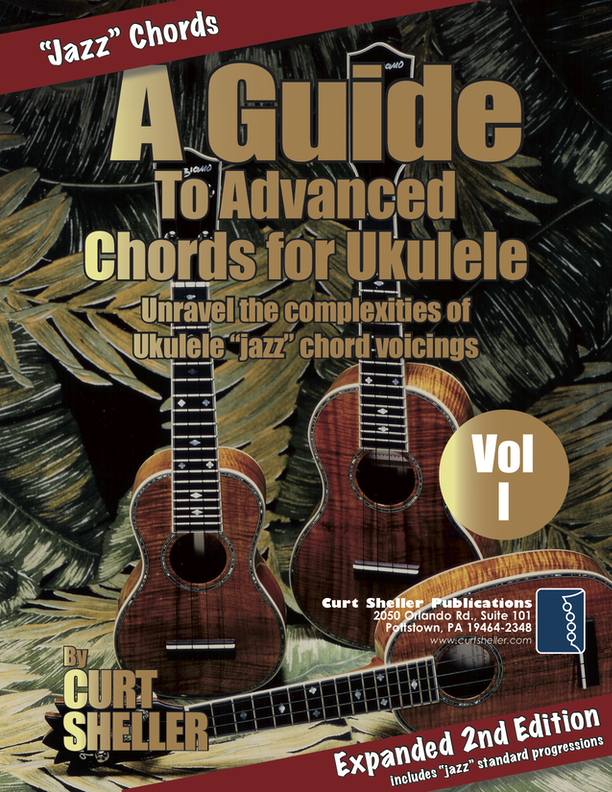
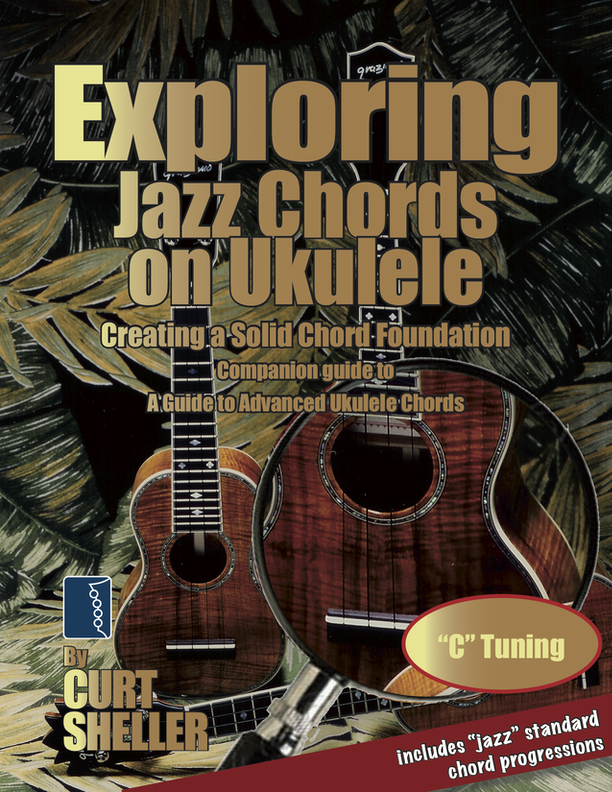
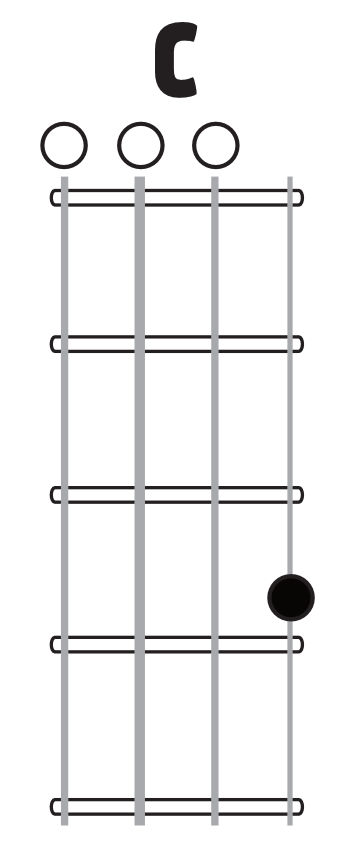
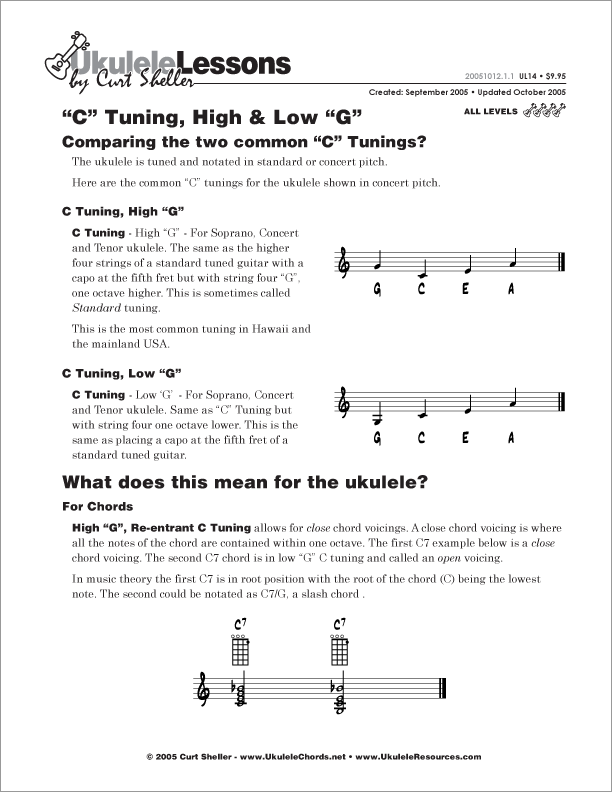
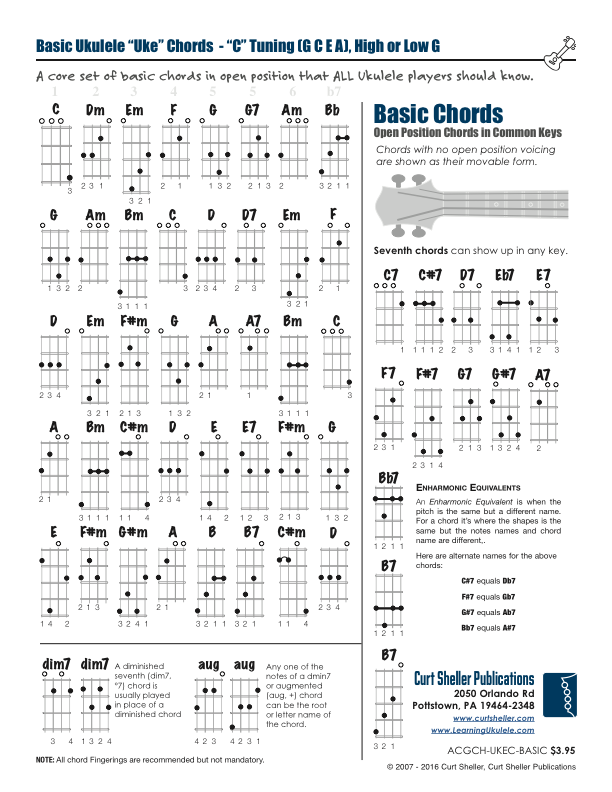
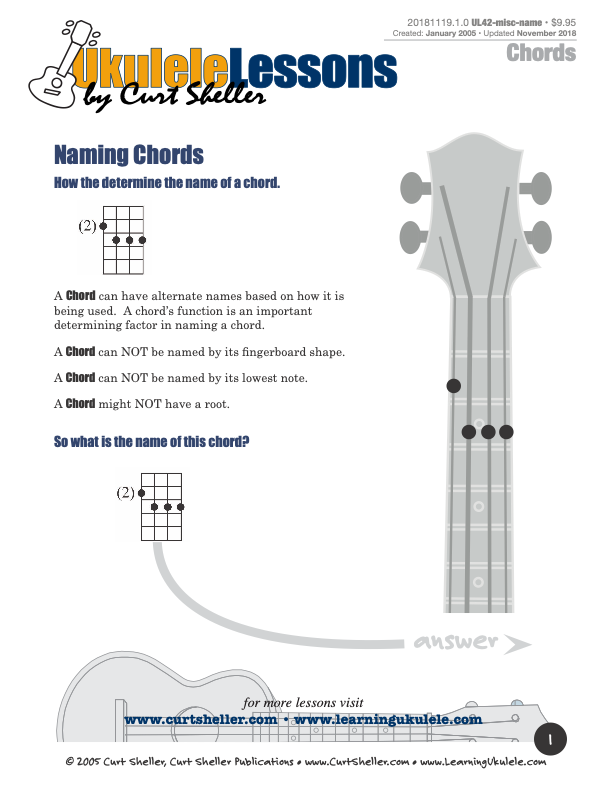
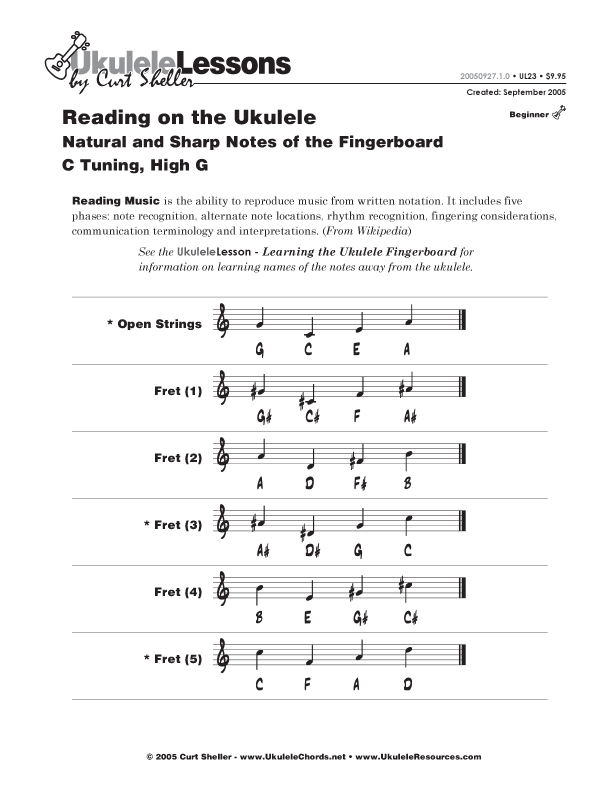
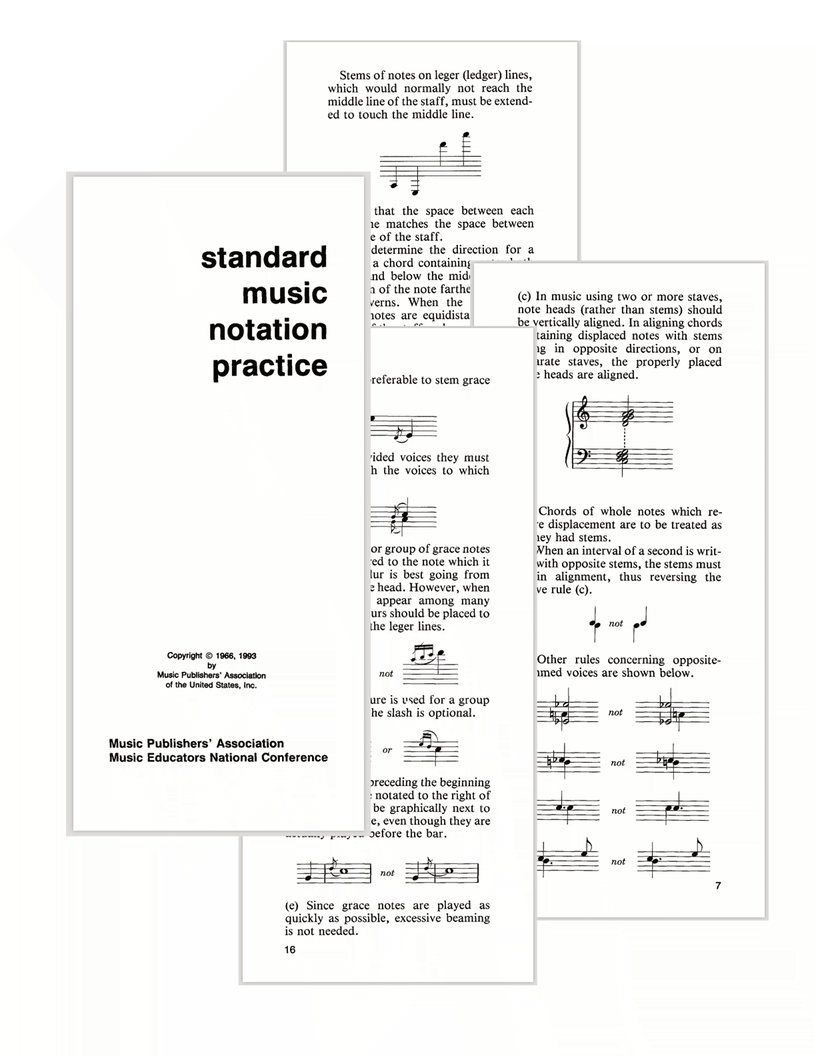




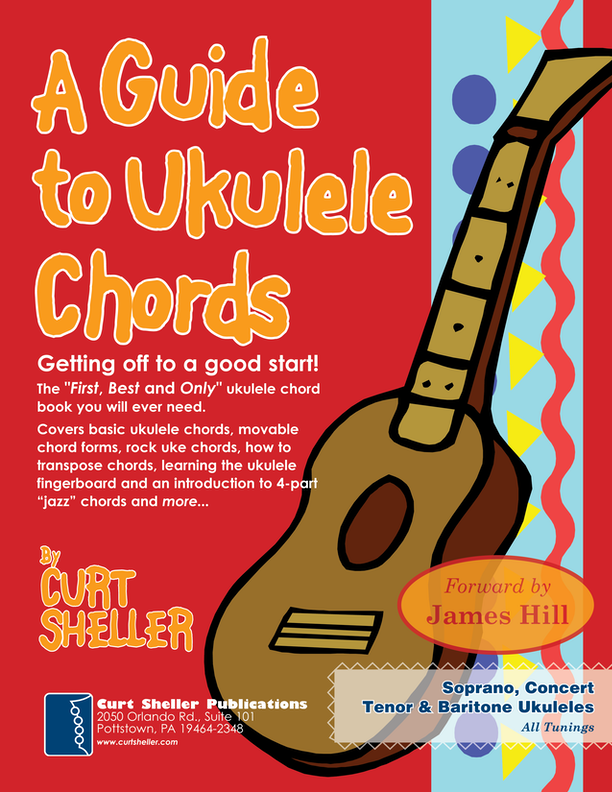
.jpg)